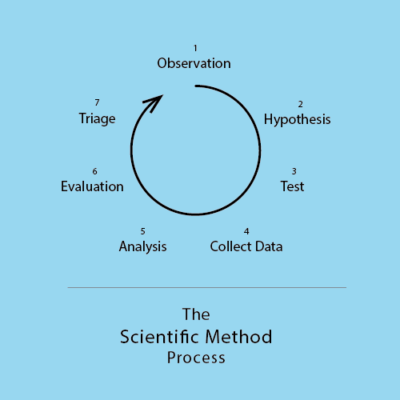 Science is a fascinating process of understanding the universe, beginning with observation. It is a systematic method of studying nature within a framework of principles.
Science is a fascinating process of understanding the universe, beginning with observation. It is a systematic method of studying nature within a framework of principles.
These science principles include objective observation, formulation of hypotheses, testing, data collection, analysis, evaluation, and repetitive falsification testing. Science extracts data to objectively seek answers to questions about the universe.
(Science Study Methods is a sequel to What is Science and Studying Evolution in our Understanding Evolution series)
Laws of Nature
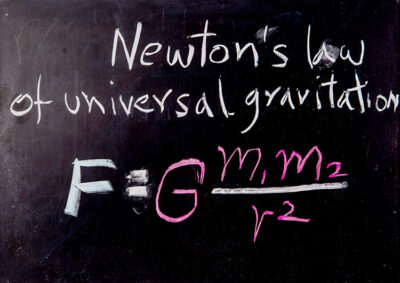 The laws of nature drive the universal patterns and regularities of the universe’s past, present, and future. For centuries, the Scientific Method has remained the gold standard for solving nature’s mysteries. Often expressed mathematically, it is science’s most rigorous method for describing, predicting, and validating natural laws.
The laws of nature drive the universal patterns and regularities of the universe’s past, present, and future. For centuries, the Scientific Method has remained the gold standard for solving nature’s mysteries. Often expressed mathematically, it is science’s most rigorous method for describing, predicting, and validating natural laws.
However, biology and physics are distinctly different natural science fields. Unlike physics, the laws in biology are not universal. Each realm of biology is unique and distinct. Therefore, the study of biology and physics must be approached differently.
Natural scientists have developed empirical and experimental approaches to studying biology within the structure of the Scientific Method. The introduction of these research methods revolutionized our understanding of biology.
First, the scientific method is described, followed by the methods commonly applied to study within the biological sciences in the twenty-first century.
Scientific Method
Empirical and Experimental Research approaches apply variations of the Scientific Method process:
- Observation: Objectively observe a phenomenon.

- Hypothesis: Formulate testable alternative hypotheses to explain the observation, often mathematical.
- Test: Design and conduct cause and effects experiments to evaluate the formulated hypotheses.
- Collect Data: Organize and record cause and effects objective observations.
- Analysis: Analyze the calculated predictive value of the proposed hypotheses to explain the phenomenon.
- Evaluation: Evaluate observed predictive value to accept, refine or reject proposed hypotheses.
- Triage: Perform falsification testing to refine or further validate hypotheses with high predictive value. If not, restart the process using new hypotheses.
Falsification
Falsification is a testing procedure also known as placebo testing. It aims not merely to validate hypotheses but to assess them in an attempt to falsify the theory rigorously.
A scientific theory, by definition, must be testable and potentially proven incorrect by observable evidence or experimental testing.
While validation seeks to confirm a theory’s predictions, falsification testing focuses on disproving the theory. A theory must pass falsification testing to qualify as a natural law.
Even though the Scientific Method can validate a theory, this approach cannot establish cause-and-effect relationships.
Experimental Research
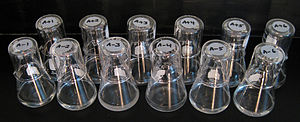 Experimental research aims to establish cause-and-effect relationships, which are critical in validating the relationship between natural selection and evolution. For Darwin, natural selection is the cause of the new species –
Experimental research aims to establish cause-and-effect relationships, which are critical in validating the relationship between natural selection and evolution. For Darwin, natural selection is the cause of the new species –
“On the Origin of Species by Means of Natural Selection”
Step Process Comparison
Experimental Research follows the structure of the Scientific Method with adaptations to investigate the cause-and-effects within biology. Lenski’s long-term E coli study (pictured above) is an example.
The following table compares the Experimental Research process to the Scientific Method.
| Experimental Research | Scientific Method |
| Observation: By observing a phenomenon, identify a cause-and-effect question to answer, i.e., what caused the phenomenon? | Observation: Objectively observe a natural phenomenon. |
| Hypothesis: Formulate a hypothesis to explain the relationship between the independent and dependent variables. | Hypothesis: Formulate a testable hypothesis to account for the observation, often mathematical. |
| Selection: Select a study group representative of the identified phenomenon. | Selection: Not applicable. Since the Scientific Method approach aims to study the universal laws of nature, observations must be non-selectively universal. |
| Randomization: When using a between-subjects design, randomly assign participants to groups to control for individual differences. | Randomization: Not applicable. Since the Scientific Method approach aims to study the universal laws of nature, randomization is not performed. |
| Test: Conduct experiments by manipulating the independent variable(s) and measuring and recording the effect on the dependent variable(s). | Test: Conduct experiments and record observations. |
| Data Management: Organize recorded observations. | Collect Data: Collect and organize recorded observations. |
| Data Analysis: Perform data analysis of the measured observed effects of variable manipulations between groups and their statistical significance. | Analysis: Perform qualitative data analysis of observations. A p-value < 1 invalidates the hypothesis as a natural law. |
| Evaluation: Determine the hypothesis’s value based on the observed data’s statistical significance [p-value]. A significance level greater than 0.05 suggests that the observed data is consistent with the hypothesis.
Draw Conclusions: Based on the data analysis, conclude the relationship between the independent and dependent variables. The hypothesis is verified if the results support it; the hypothesis is rejected if the results do not. |
Evaluation: Inductively determine if the hypothesis predicted the observed data analysis. |
| Triage: Proceed to iterative testing when the observed data is consistent with the hypothesis. If not, restart the process, starting with observation. | Triage: Proceed to iterative falsification testing when the evaluation supports the hypothesis. If not, restart the process, starting with observation. |
| Communication: Write and submit a scientific research report for publication in a peer-reviewed scientific journal. | Communication: Write and submit a scientific research report for publication in a peer-reviewed scientific journal. |
Variations to experimental research include pre-experimental and quasi-experimental research methods. While pre-experimental research is performed without manipulating variables or controlling conditions, quasi-experimental research uses the same steps without randomization.
Pre-experimental research is the simplest form of research design. With pre-experiment, either a single or multiple groups are observed after an agent or treatment that is presumed to cause change.
Empiric Research
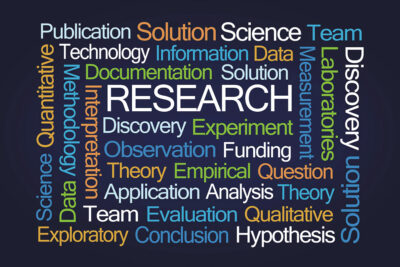 The word ” empirical ” derives from the Greek empeirikos, which means “experienced.” While the conclusions drawn are based on empirical evidence, the Empirical Research method may also use indirect observations and experiences.
The word ” empirical ” derives from the Greek empeirikos, which means “experienced.” While the conclusions drawn are based on empirical evidence, the Empirical Research method may also use indirect observations and experiences.
Step Process Comparison
Empirical research is more like the Scientific Method than Experimental Research. It involves systematically collecting and analyzing observable data to test hypotheses, answer research questions, or gain insights into varying biological characteristics.
While Experimental Research evaluates cause-and-effects, Empiric Research evaluates inferences drawn from observations. Bernard Kettlewell’s peppered moth population study is an example of Empiric Research.
The following table compares the Empirical Research process to the Scientific Method.
| Empiric Observation Research | Scientific Method |
| Observation: Objectively record quantitative or qualitative real-life observations or experiences. | Observation: Objectively observe a natural phenomenon. |
| Hypothesis. Inductively formulate a hypothesis to account for the observations or experiences compatible with published relevant reports. | Hypothesis: Inductively formulate a hypothesis to account for the observed phenomenon, often mathematical. |
| Methods: Define selective sampling method: random, systematic, stratified, random, or cluster, to conduct testing experiments. | Methods: Define non-selective sampling methods to conduct testing experiments. |
| Testing: Perform tests and record observations. | Testing: Perform tests and record observations. |
| Collect Data: Record and organize testing observations. | Collect Data: Record and organize testing observations. |
| Analyze: Perform statistical analysis of recorded observations performed during testing and compare to published reports. | Analyze: Perform statistical analysis of observations performed during testing.
By definition, a p-value < 1 invalidates the hypothesis as a natural law. |
| Evaluation: Deductively explain the value of the hypothesis in predicting the observed data. | Evaluation: Deductively explain the value of the hypothesis in predicting the observed data. |
| Triage: Proceed to iterative falsification testing when the evaluation supports the hypothesis. If not, restart the process, starting with observation. | Triage: Proceed to iterative falsification testing when the evaluation supports the hypothesis. If not, restart the process, starting with observation. |
| Communication: Write a scientific research report and submit it for publication in a peer-reviewed scientific journal. | Communication: Write a scientific research report and submit it for publication in a peer-reviewed scientific journal.
|
Historical Research
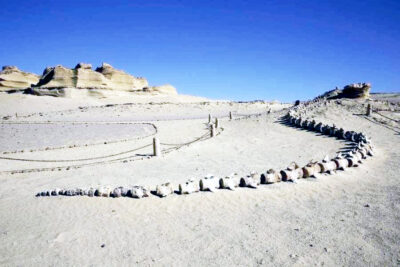 Science extracts value from data. However, since extracting ancient phenomenon data from sediments and rock is complicated, the rules governing Historical Research are more flexible than other fields of science.
Science extracts value from data. However, since extracting ancient phenomenon data from sediments and rock is complicated, the rules governing Historical Research are more flexible than other fields of science.
Historical Research, however, while the only method to directly study evidence for evolution, is science’s least verifiable method. Based on similarities and differences, scientists can only infer patterns of descent using this method.
The Earth contains a treasure trove of ancient life, from microbes to woolly mammoths, from mountain peaks to the ocean bottom. Alfred Sherwood Romer’s widely circulated textbook Vertebrate Paleontology noted that the fossil record is nearly complete, with 97.7 percent of the known living orders found in fossilized form.
Paleontology
 Paleontology is an expanding field of science studying ancient life on Earth. Biotechnology advances now allow paleontologists to study increasing levels of complexity in Earth’s biosphere.
Paleontology is an expanding field of science studying ancient life on Earth. Biotechnology advances now allow paleontologists to study increasing levels of complexity in Earth’s biosphere.
Archaeology, geology, astronomy, and cosmology are other natural sciences that rely on Historical Research. Unlike the Scientific Method, Historical science aims to describe and explain what happened, not to predict what will happen or explain causes.
However, the structure of the Historical Research process follows that of the other scientific methods. The following table compares Historical Research to its most similar method, Empirical Research.
| Historical Research | Empiric Observation Research |
| Observation: Objectively record quantitative or qualitative observations of early life forms. | Observation: Objectively record quantitative or qualitative real-life observations or experiences. |
| Hypothesis: Inductively formulate a hypothesis based on pre-study observations or published reports. | Hypothesis. Inductively formulate a hypothesis to account for the observations or experiences compatible with published relevant reports. |
| Methods: Variable. | Methods: Define selective sampling method: random, systematic, stratified, random, or cluster, to conduct testing experiments. |
| Testing: Variable, record observations. | Testing: Perform tests and record observations. |
| Collect Data: Record and organize testing observations. | Collect Data: Record and organize testing observations. |
| Analyze: Perform quantitative and/or qualitative analysis of recorded observations performed during testing and compare them to published reports. | Analyze: Perform statistical analysis of recorded observations performed during testing and compare them to published reports. |
| Evaluation: Deductively explain the value of the hypothesis in predicting the observed data. | Evaluation: Deductively explain the value of the hypothesis in predicting the observed data. |
| Triage: Proceed to iterative falsification testing when the evaluation supports the hypothesis. If not, restart the process, starting with observation. | Triage: Proceed to iterative falsification testing when the evaluation supports the hypothesis. If not, restart the process, starting with observation. |
| Communication: Write a scientific research report and submit it for publication in a peer-reviewed scientific journal. | Communication: Write a scientific research report and submit it for publication in a peer-reviewed scientific journal. |
The four most common investigative methods in natural sciences include the Scientific Method, Experimental Research, Empirical Research and Historical Research. The following summarizes the primary aim of each method –
Scientific Method – validating the laws of nature.
Experimental Research – investigating natural cause-and-effects.
Empirical Research – explaining ongoing observations in nature.
Historical Research – inferring ancient Earth explanations.
Science Study Methods is a subcategory of What Is Science?
More
Science Study Methods may use subcategory reasoning processes, including –
Darwin Then and Now is an educational resource on the intersection of evolution and science, highlighting the ongoing challenges to the theory of evolution.
Move On
Explore how to understand twenty-first-century concepts of evolution further using the following links –
-
- The Understanding Evolution category showcases how varying historical study approaches to evolution have led to varying conclusions. Subcategories include –
- Studying Evolution explains how key evolution terms and concepts have changed since the 1958 publication of The Origin of Species.
- What is Science (current category) explains Charles Darwin’s approach to science and how modern science approaches can be applied for different investigative purposes.
- Evolution and Science feature study articles on how scientific evidence influences the current understanding of evolution.
- Theory and Consensus feature articles on the historical timelines of the theory and Natural Selection.
- The Biography of Charles Darwin category showcases relevant aspects of his life.
- The Glossary defines terms used in studying the theory of biological evolution.
- The Understanding Evolution category showcases how varying historical study approaches to evolution have led to varying conclusions. Subcategories include –

